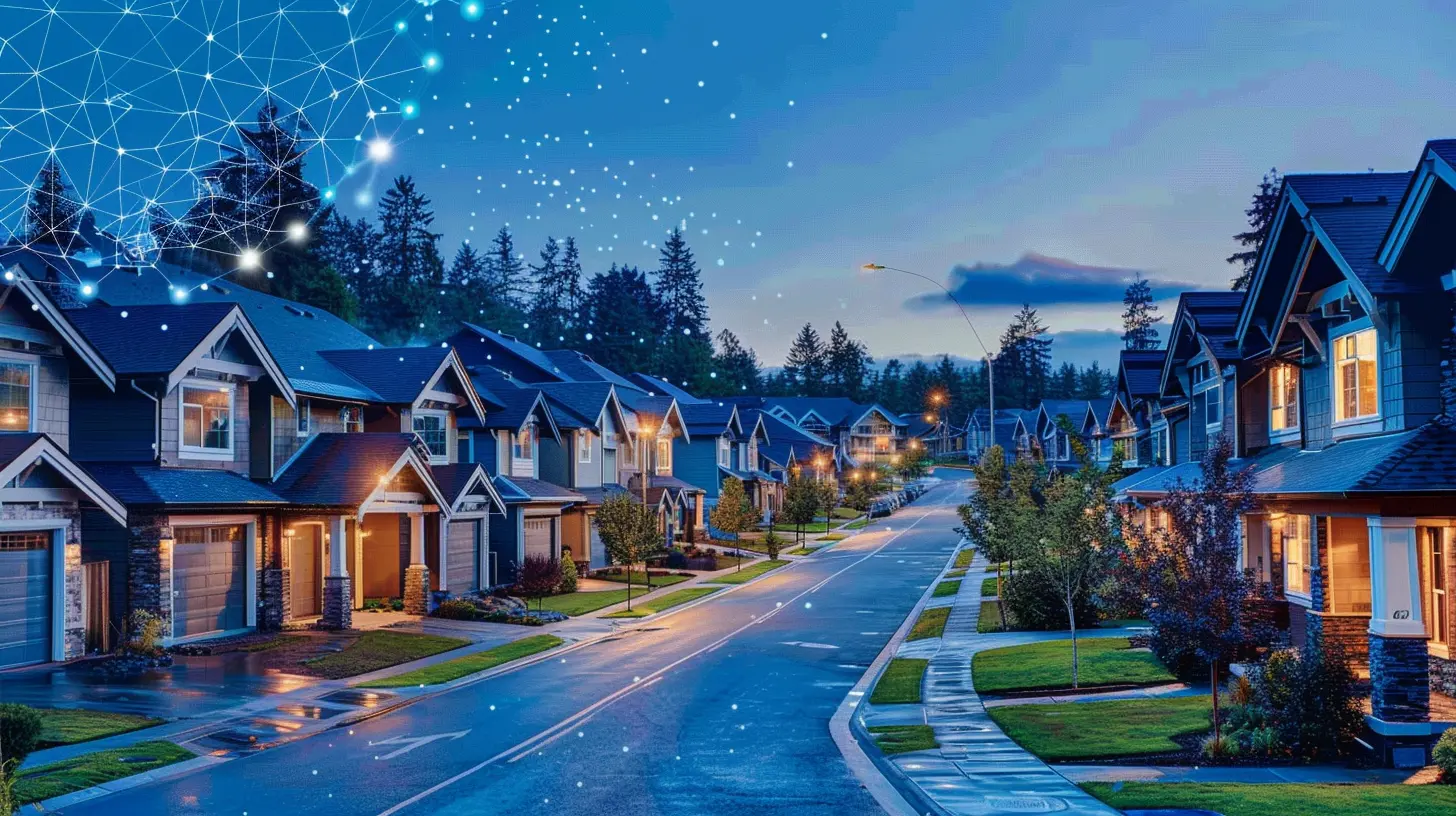Tech Cities: How Tech Hubs Are Changing Real Estate Trends
31 July 2025
The rise of tech hubs has transformed the real estate landscape in ways we couldn’t have imagined just a few decades ago. Cities once known for their manufacturing or financial prowess are now being redefined by high-tech industries, bringing a mix of opportunity and challenges to the housing market.
But how exactly are these booming tech hubs reshaping real estate trends? Let’s break it down.

What Are Tech Cities?
A tech city is a metropolitan area where the tech industry is a dominant economic driver. Think of places like San Francisco, Austin, Seattle, and Boston—all of which are teeming with startups, major tech headquarters, and a solid infrastructure that supports innovation.These cities attract highly skilled professionals, companies with deep pockets, and investors looking to cash in on the next big thing. But as the demand for tech talent surges, so does the need for housing, drastically altering local real estate markets.

The Impact of Tech Hubs on Real Estate Trends
Let’s dive into the key ways tech cities are shaking up the real estate game.1. Skyrocketing Home Prices
When a city becomes a tech hub, home prices follow an upward trajectory—sometimes at an alarming pace.Take San Francisco, for example. The rise of Silicon Valley turned the Bay Area into one of the most expensive housing markets in the world. As tech giants like Google, Apple, and Facebook expanded, home prices skyrocketed, leaving many middle-class families struggling to afford housing. The same trend is now evident in cities like Austin and Denver, where an influx of tech workers has driven prices to record highs.
2. Rental Market Disruptions
Workers flocking to tech hubs often prefer renting over buying—at least initially. This surge in demand causes rental prices to shoot up, making it difficult for long-term residents to keep up with the rising costs.For instance, as Amazon expanded its presence in Seattle, rent prices soared. The demand for apartments outpaced supply, leading to bidding wars even in the rental market. The result? Locals and lower-income families get priced out, forced to move to the outskirts or entirely new cities.
3. Development of Smart Buildings and High-Tech Homes
With tech workers commanding high salaries, they expect more than just four walls and a roof. Smart homes, high-tech apartments, and co-working-friendly buildings have become the norm in tech cities.Developers now integrate features like automated lighting, app-controlled security systems, and energy-efficient designs to cater to this demographic. Companies like Google and Amazon have even played a role in shaping smart home ecosystems, making these features less of a luxury and more of an expectation.
4. The Rise of “Live-Work-Play” Communities
Tech professionals love convenience. As a result, mixed-use developments—where residential, office, and recreational spaces blend seamlessly—are booming.Places like The Domain in Austin or South Lake Union in Seattle showcase this concept beautifully. Residents can walk from their apartment to work, grab a coffee at a trendy café, hit the gym, and unwind at a bar—all without leaving their neighborhood. These communities cater to the fast-paced, convenience-driven lifestyle that tech workers crave.
5. Suburban Boom: The Remote Work Effect
Not all real estate trends in tech cities revolve around urban cores. With remote work becoming more common, many tech workers are ditching expensive city life in favor of the suburbs—or even entirely different states.Tech hubs like San Francisco and New York saw an exodus of workers relocating to places like Phoenix, Nashville, and Boise, where they could buy spacious homes at a fraction of the cost. This shift has driven up suburban home prices, creating mini real estate booms in unexpected locations.

Challenges Created by Tech Hub Growth
It’s not all sunshine and rainbows when a city becomes a tech hub. While economic growth and job opportunities are great, they come with real estate challenges, too.1. Gentrification and Displacement
When tech money floods a city, it often pushes out long-time residents. Neighborhoods that were once affordable suddenly become prime real estate, with property values soaring and rent prices following suit.This leads to gentrification, where lower-income families and older residents struggle to keep up and are forced to relocate. Oakland, California, is a prime example—once an affordable alternative to San Francisco, it’s now facing the same skyrocketing prices and demographic shifts.
2. Infrastructure Strain
More people means more pressure on a city's infrastructure. Roads become congested, public transportation gets overcrowded, and housing supply struggles to keep up.Cities like Austin and Denver have faced significant challenges in keeping up with their rapid growth. Traffic congestion is at an all-time high, and local governments are scrambling to expand public transit and improve infrastructure.
3. Housing Supply Shortages
The demand for homes in tech cities often outpaces supply, driving prices even higher. Strict zoning laws and land-use regulations sometimes slow down new construction, making it harder for the market to meet demand.In places like San Francisco, restrictive building laws have led to a severe housing shortage, with only a fraction of the needed homes being built each year. This continues to push home prices and rental rates to staggering levels.

Future Real Estate Trends in Tech Hubs
Where is all of this heading? While no one has a crystal ball, some key trends are already taking shape.1. Expansion of Emerging Tech Hubs
With San Francisco and New York becoming unaffordable, smaller cities are stepping into the spotlight. Places like Raleigh, Charlotte, and Salt Lake City are attracting tech startups and talent, thanks to lower living costs and strong business incentives.As tech giants expand their footprints, expect more secondary cities to transform into major tech players, bringing similar real estate trends with them.
2. More Investment in Affordable Housing
Local governments and developers are beginning to prioritize affordable housing initiatives to combat displacement and housing shortages.Cities like Denver and Minneapolis are implementing policies to encourage mixed-income developments, while tech companies like Google and Facebook have started investing billions into housing projects to address the affordability crisis.
3. Hybrid Work’s Long-term Impact on Real Estate
Remote and hybrid work models aren’t going away. This means that the demand for downtown office spaces may decline, while suburban and smaller-city real estate markets continue to thrive.Developers are rethinking office spaces, creating flexible work environments that cater to hybrid employees. Meanwhile, more workers are expected to shift to smaller cities and rural areas where they can enjoy a lower cost of living without sacrificing career opportunities.
Conclusion
Tech hubs are reshaping real estate in profound ways—from skyrocketing home prices and rental markets to the rise of smart homes and suburban booms. While these cities offer exciting opportunities, they also come with significant challenges like gentrification, infrastructure strain, and housing shortages.As the tech industry continues to evolve, so too will real estate trends. Whether you’re a homebuyer, renter, investor, or city planner, staying ahead of these trends can help you navigate the ever-changing landscape of tech-driven markets.
all images in this post were generated using AI tools
Category:
Housing MarketAuthor:

Kingston Estes
Discussion
rate this article
1 comments
Brittany Jacobs
This article insightfully highlights the transformative impact of tech hubs on real estate. While these cities drive innovation and demand, it's essential to consider the potential challenges, such as affordability and infrastructure, that accompany rapid growth.
August 8, 2025 at 11:08 AM

Kingston Estes
Thank you for your thoughtful comment! You're right—while tech hubs bring innovation and economic growth, we must also address the challenges of affordability and infrastructure to ensure sustainable development.


